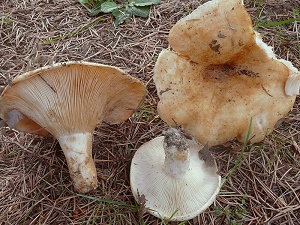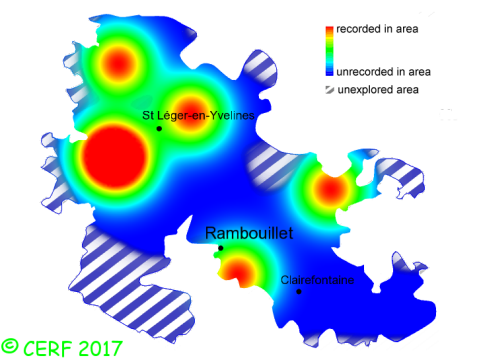| Lactarius evosmus Kühner & Romagnesi |
|
|
|
|
|
|
The cap is ochre cream, convex then depressed, funnel-shaped. The cap surface is viscid when young, then dry. The stem is white cream to ochre, without blotches. The flesh is whitish, unchanging; its taste is very acrid; the odour is fruity, of apples or geranium; its texture is grainy (breaking like a chalk stick), exuding when cut a white, unchanging milk. The gills are whitish to pale buff, decurrent, crowded . The spore print is pale ochre (E-F). This species is mycorrhizal. It grows on the ground, in broad-leaved (sometimes coniferous) woods, on a rather clayey-calcareous soil, with oak, but also with poplar and willow. The fruiting period takes place from July to November.
Distinctive features : ochre-cream cap, arranged in concentric bands; flesh and milk white, unchanging; milk with very hot taste; stem without blotches; rather strong odour of fruit or geranium Lactarius evosmus is quite rare and localised in the forest of Rambouillet, and is quite rare, more generally speaking . | ||
|
page updated on 14/01/18

